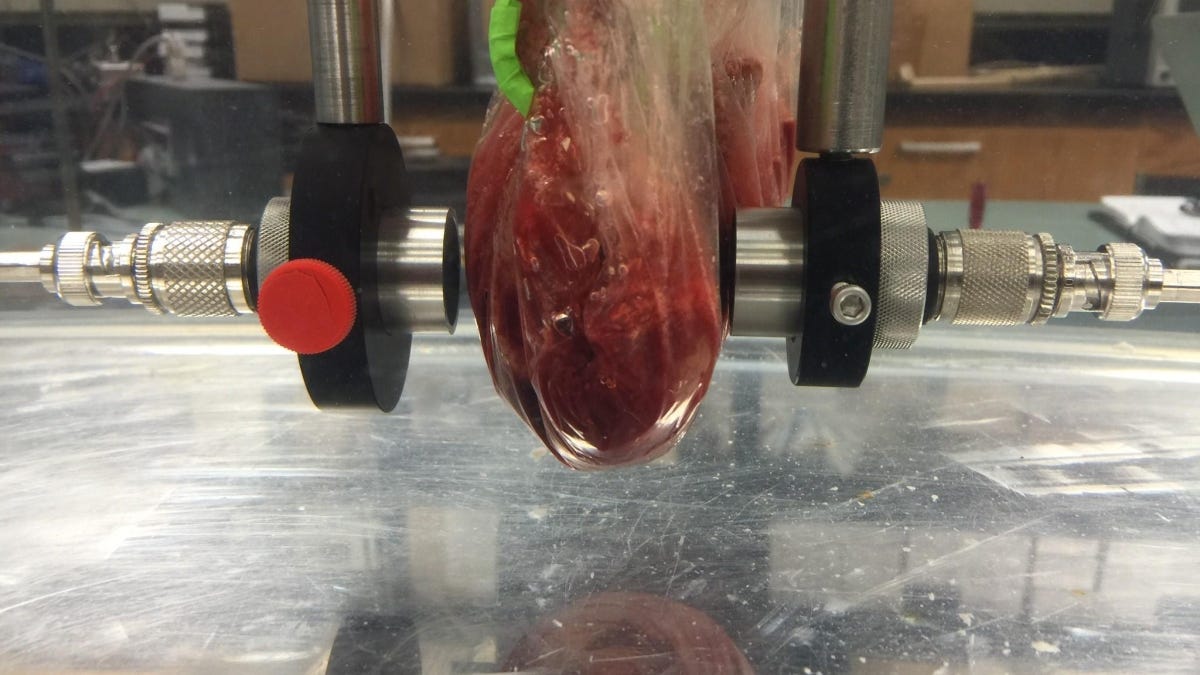Signals transmitted through raw meat at HD video quality, for science
Researchers have transmitted signals through raw meat at a rate of 30Mbps to demonstrate the real-time transmission of video data through living flesh.
Why would you want to do such a thing? Medical science, of course! To improve implanted devices and maybe even live-stream video data from inside the body, a team of researchers has demonstrated that ultrasonic communications technology can transmit data through meat at speeds of up to 30Mbps. Using this technology, you could watch Netflix in ultra-high definition through a wall of meat.
The team used slabs of pork and beef to prove their concept.
"Using ultrasonic signals, we envision the ability to not only control implanted medical devices in the body but to provide live streaming of high-definition video from devices inside the body," Andrew Singer said in a statement.
Singer, of the Department of Electrical and Computer Engineering at the University of Illinois at Urbana-Champaign, led the team in their research.
"You can imagine a device that is swallowed for the purposes of imaging the digestive tract but with the capability for the HD video to be continuously streamed," said Singer. "We wanted to show that it was possible. Engineering is about always reaching toward that adjacent possible."
The human body is thicker than a cut of pork from the butcher.
Current implanted medical devices use radio-frequency electromagnetic waves to transmit data. The US Federal Communications Commission restricts this to a maximum frequency of 300 kHz. This is because any higher could cause both harm to the patient and interference to nearby devices, but it also limits speeds to 50 Kbps. Not to mention that the human body absorbs some of the signal. For medical professionals trying to transfer data to or from an implant, this can become a laborious process.
And implanted devices are on the rise. Cardiac patients, of course, are the largest group that uses medical implants, but there are also glucose monitors, insulin pumps, intracranial pressure sensors, ingestible cameras, defibrillators and pacemakers.
There were some limitations to the study. The meat used was a slab of pork muscle and a beef liver, purchased from a butcher. This means the technology hasn't been tested on bone or cartilage, would could limit the signal. For a camera or pacemaker transmitting through a patient's torso, where the delicate organs are protected by the rib cage, this is an important thing to test.
The transmitters used by Singer and Oelze were also pretty close together, and the slab of meat was not as thick as, say, a human gut might be. According to IEEE, the pair hope to conduct tests with whole animals to try and resolve some of these problems.


